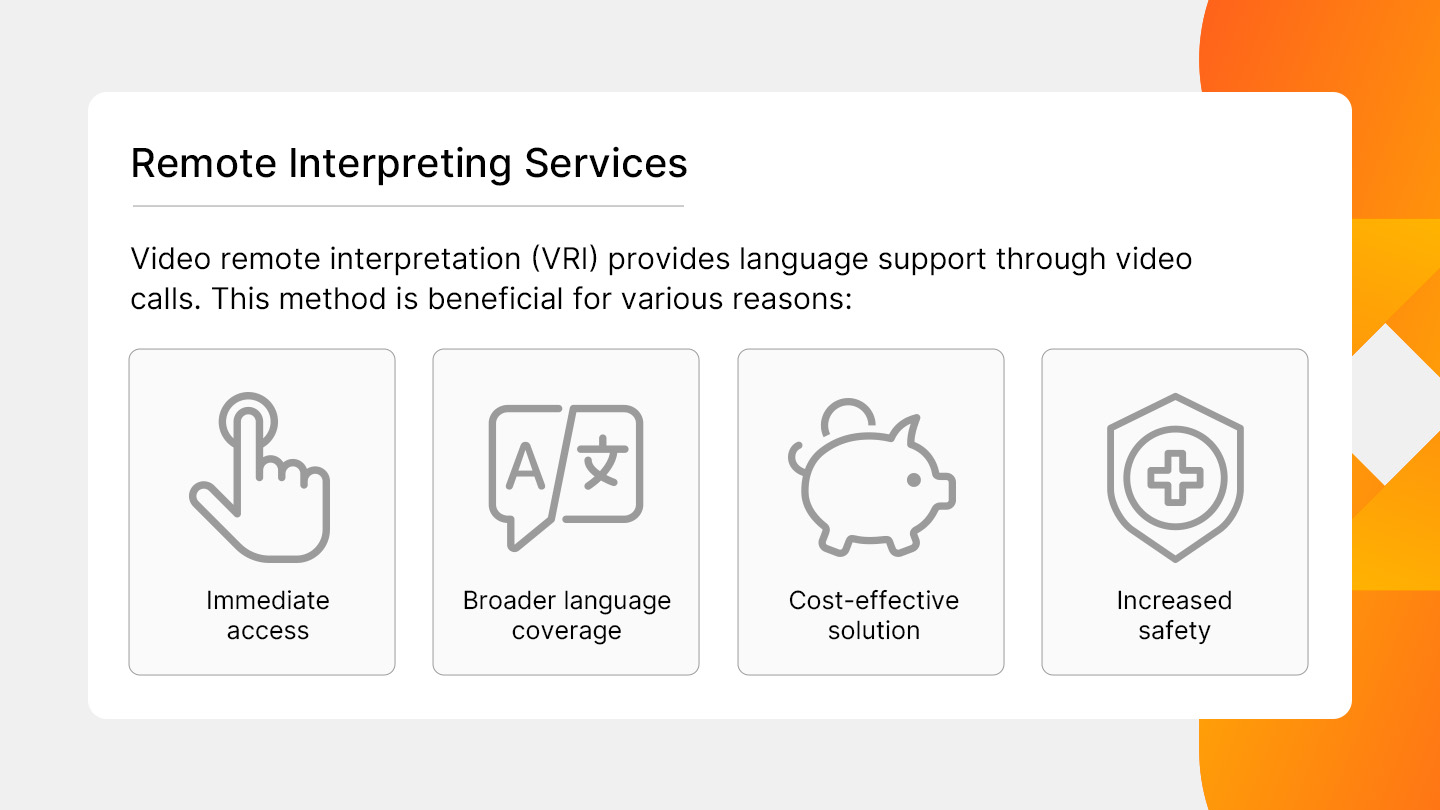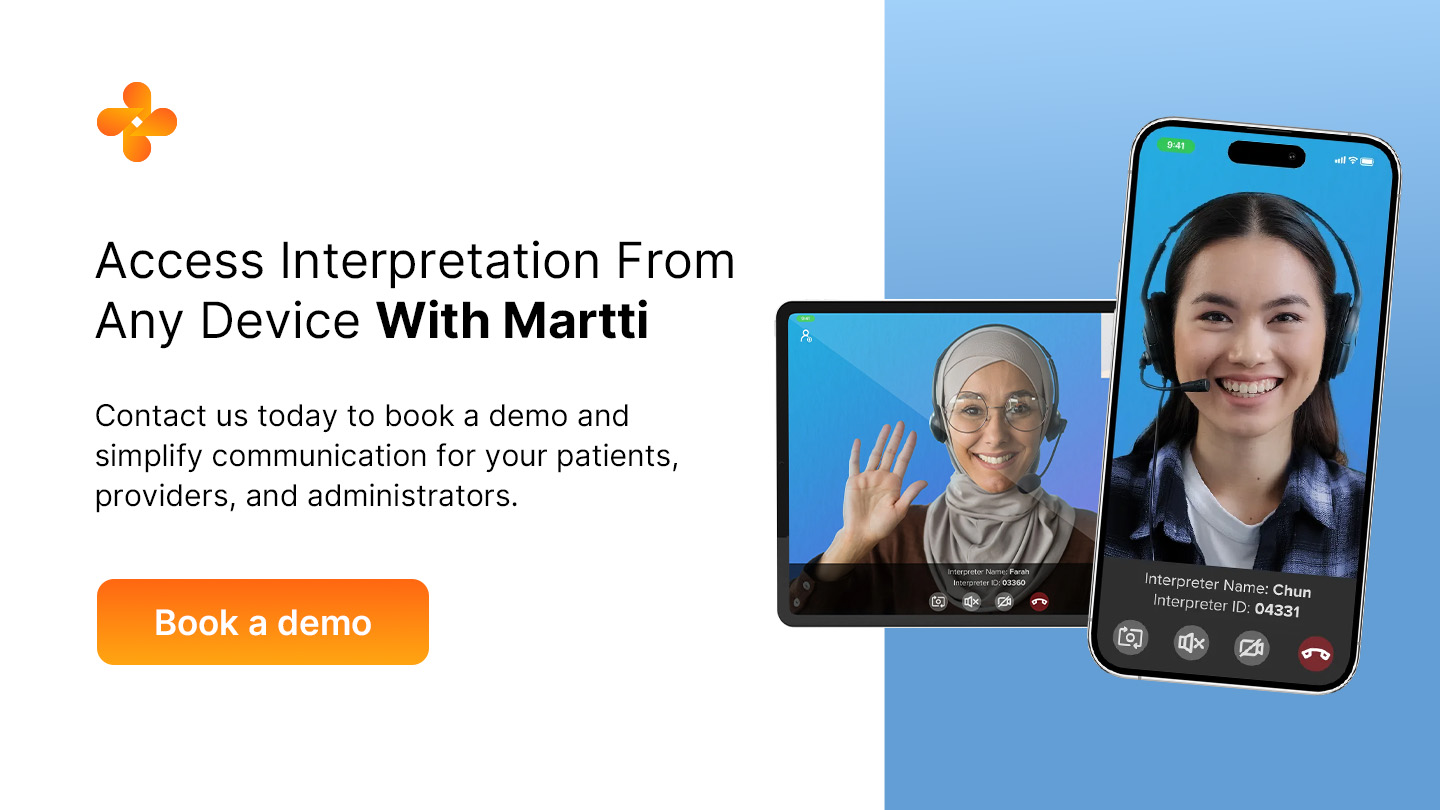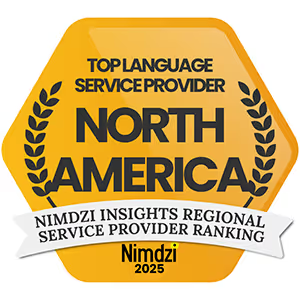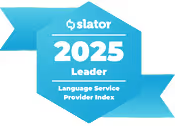Providing accurate medical interpretation is crucial to ensuring effective communication between healthcare providers and patients with limited English proficiency (LEP), those who are Deaf, or patients who are hard of hearing. Miscommunication in medical settings can lead to misdiagnoses, incorrect treatments, and serious health and legal risks.
Professional medical interpreters play a vital role in bridging language gaps and improving patient outcomes. They also help ensure that healthcare organizations comply with federal regulations such as the Americans with Disabilities Act (ADA) and Title VI of the Civil Rights Act.
By offering professional, reliable, and secure medical interpretation services, healthcare providers can enhance patient experiences, improve outcomes, and facilitate compliance with language access regulations. Understanding the differences between interpreting modalities, such as onsite and remote, helps healthcare providers select the best option based on patient needs, clinical situations, and institutional resources.
Onsite Interpreting
Onsite interpreting is a “modality in which the interpreter is physically present with at least one participant in the same location” (Allen et al., 2023). Onsite interpreting is the oldest modality in interpreting and has been in used for centuries. Up until 2019, ~80% of interpreted interactions in any specialization worldwide were done via onsite interpreting. Currently, several years post-pandemic, its use plateaued at 45-55% usage (Nimdzi, 2023).
Role of Onsite Interpreting in Complex Cases
Onsite interpreting services can be utilized in most situations; however, it is typically preferred for very complicated medical procedures, group therapy, end of life discussions, and some mental health visits. In addition, it is the only modality available for patients who are DeafBlind .
It is important to know that it may be challenging to get an onsite interpreter who is immediately available, especially in rural areas. Onsite interpretation services also involve a minimum time commitment, travel time, and mileage reimbursement. During public health emergencies, limiting in-person interactions may be necessary to protect patients and healthcare staff. That is where remote services can make a difference.
Remote Interpreting Services
Remote interpreting is defined as an “interpreting modality in which the interpreter or at least one participant is in another location” (Allen et al., 2023). Remote interpreting modalities have been developed thanks to the advancement of communication technologies. The main submodalities of remote interpreting currently used are over-the-phone interpreting (OPI), video remote interpreting (VRI), and video relay services (VRS). This section will focus on VRI.
Video remote interpretation (VRI) provides language support through video calls between the interpreter and those who need the services. This setup is highly effective in many healthcare settings, such as emergency departments, urgent care clinics, telemedicine appointments, intensive care units (ICU), pharmacies, and mental health sessions. This method is beneficial for various reasons:

- Immediate access: Remote interpretation services can be accessed 24/7 at short notice. This accessibility makes them invaluable in emergencies where waiting for an onsite interpreter is not feasible.
- Broader language coverage: Healthcare facilities can connect with interpreters for a wider range of languages. These include rare and low-demand languages that may not be available locally as well as common languages as additional support to onsite interpreters.
- Cost-effective solution: Without travel expenses or minimum booking requirements, VRI is generally more affordable for healthcare facilities. Some facilities cut 75% of their medical interpretation costs per appointment by using VRI.
- Increased safety: During public health crises, VRI minimizes the number of people in a medical facility, reducing the risk of infection transmission.
How VRI Works
VRI uses a form of video conferencing technology to connect healthcare providers, patients, and interpreters in real time. It allows interpreters to see both the patient and provider, improving communication through visual cues. For VRI to be effective, healthcare facilities must have reliable, high-quality equipment to ensure seamless communication and minimal disruptions.
Poor internet connections, unclear audio, and lagging video feeds can hinder effective communication and makes healthcare facilities non-compliant with the American with Disabilities Act. As a result, interpreters may miss signs and body language cues that affect meaning. This necessitates high-speed internet. A minimum of 10 to 25 megabits per second (Mbps) is recommended for optimal video quality. Additional technology requirements include:
- High-definition (HD) video camera: A clear, HD camera lets the interpreter see facial expressions and body language. This is crucial for accurate communication.
- Audio equipment: High-quality microphones and speakers ensure that all parties can hear each other clearly.
- Secure VRI software: Health Insurance Portability and Accountability Act (HIPAA)-compliant platforms with end-to-end encryption protect patient privacy and promote data security.
- Mobile devices: VRI can be accessed via tablets, smartphones, or computers. Using carts equipped with VRI technology further simplifies the communication process.
Compliance and Security
Healthcare interpretation services must comply with federal laws and industry regulations to ensure patients' and healthcare providers’ rights, privacy, and accessibility. Providers must choose interpretation methods that align with these standards. One key example is Title VI of the Civil Rights Act, which requires healthcare facilities that receive federal funding to provide language access services to LEP patients.
The ADA also mandates that patients who are Deaf or hard of hearing should receive effective communication options. Additionally, Section 1557 of the Affordable Care Act (ACA) strengthens these language requirements, prohibiting discrimination on national origin.
HIPAA Compliance and Patient Privacy
Interpreters must adhere to HIPAA requirements to ensure that patient information remains private. Remote interpretation platforms must also use secure, encrypted communication channels to prevent unauthorized access.
Working with professional medical interpreters, whether onsite or remotely, is critical for compliance. Family members or untrained staff should not serve as interpreters, as this can lead to misinterpretations and HIPAA violations. Medical terminology is not often used conversationally and can be confusing or lost during interpretation. In addition, having family members or untrained staff interpret prevents them from focusing on their main role of supporting and treating patients due to the additional burden and responsibility that interpreting entitles.
Why Trust Us?
At Martti, we give your team and patients access to real-time medical interpretation in over 250 languages at any time of the day. With instant, accurate VRI and OPI medical interpretation delivered by industry-leading interpreters, you can build trust with your patients.
Our interpreters have over 120 hours of initial training and additional hours in continuing education. This training ensures they have extensive knowledge of complex medical terminology.
The average connection time for the most common language requested is 20 seconds or less and you can access these video interpretation services from any device or use a Martti device built for healthcare needs, which includes easy cleaning and access.
Access Interpretation From Any Device With Martti
Healthcare providers must assess patient needs, medical complexity, and logistical constraints when it comes to onsite versus remote interpreting. From high-stakes situations, such as surgical consultations, to urgent, time-sensitive cases, the specific language expertise of remote interpreters can bridge potential communication gaps.
At Martti, we understand that efficiency and reliability are key in hospitals, community health centers, clinics, and pharmacies. Our platform also integrates seamlessly with platforms like Cerner, eCW, and Epic. It offers smart language selection by automatically matching with the patient's EHR language preference and automatic documentation.
Contact us today to book a demo and simplify communication for your patients, providers, and administrators. Become one of many Martti partners that are revolutionizing their medical interpretation.

Linked Sources
- https://athelp.sfsu.edu/hc/en-us/articles/360050514614-Internet-speed-and-bandwidth
- https://www.martti.io/casestudy/ciusss
- https://www.martti.io/technology
- https://www.justice.gov/crt/fcs/TitleVI
- https://www.hhs.gov/civil-rights/for-individuals/section-1557/fs-sex-discrimination/index.html
- https://healthlaw.org/wp-content/uploads/2022/09/HIPAA_and_interpreters_2009.pdf
- https://www.martti.io/interpreters
- https://www.martti.io/devices
- https://www.martti.io/integrations
- https://www.martti.io/contact
- https://www.martti.io/case-studies









